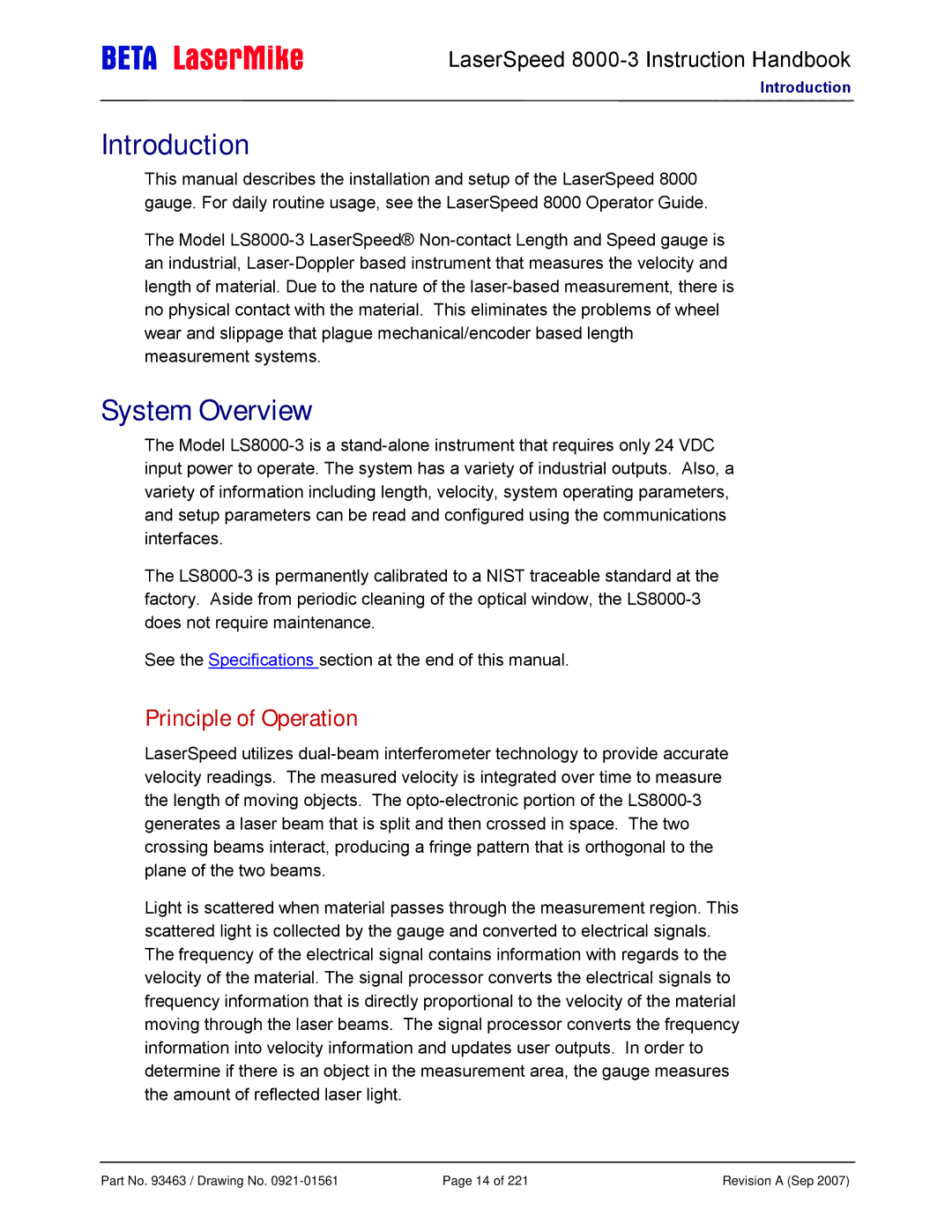
LaserSpeed
Introduction
Introduction
This manual describes the installation and setup of the LaserSpeed 8000 gauge. For daily routine usage, see the LaserSpeed 8000 Operator Guide.
The Model
System Overview
The Model
The
See the Specifications section at the end of this manual.
Principle of Operation
LaserSpeed utilizes
Light is scattered when material passes through the measurement region. This scattered light is collected by the gauge and converted to electrical signals. The frequency of the electrical signal contains information with regards to the velocity of the material. The signal processor converts the electrical signals to frequency information that is directly proportional to the velocity of the material moving through the laser beams. The signal processor converts the frequency information into velocity information and updates user outputs. In order to determine if there is an object in the measurement area, the gauge measures the amount of reflected laser light.
Part No. 93463 / Drawing No. | Page 14 of 221 | Revision A (Sep 2007) |
